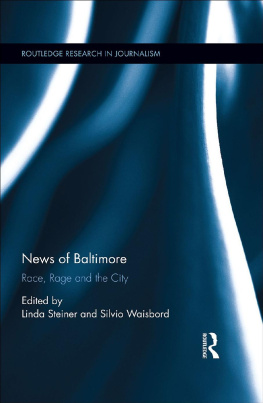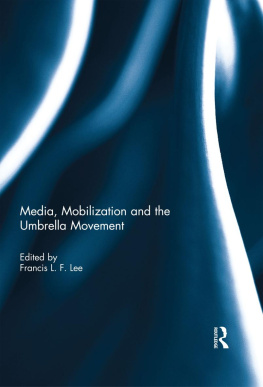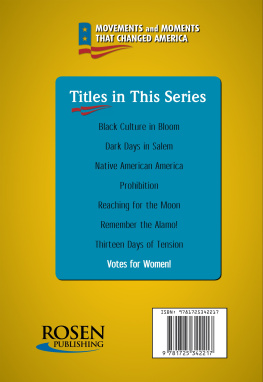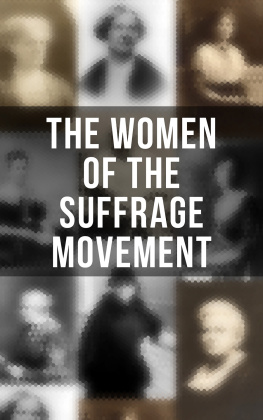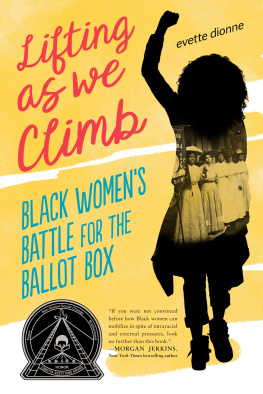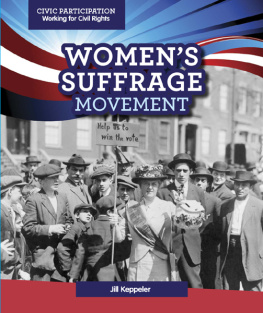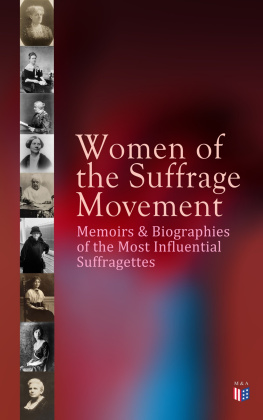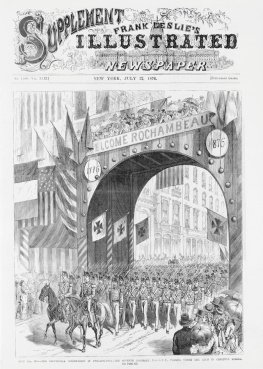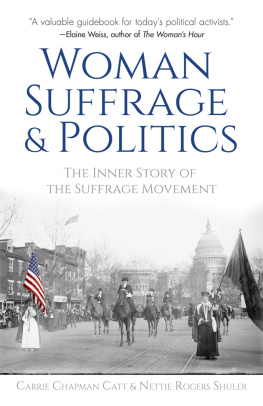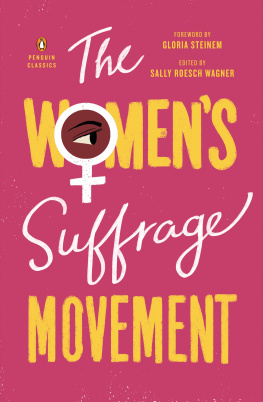Front Pages, Front Lines
THE HISTORY OF
COMMUNICATION
Robert W. McChesney and
John C. Nerone, editors
A list of books in the series appears
at the end of this book.
Front Pages, Front Lines
Media and the Fight
for Womens Suffrage
Edited by
LINDA STEINER, CAROLYN KITCH,
AND BROOKE KROEGER
2020 by the Board of Trustees
of the University of Illinois
All rights reserved
Library of Congress Control Number: 2019956849
ISBN 978-0-252-04310-9 (hardcover)
ISBN 978-0-252-08497-3 (paperback)
ISBN 978-0-252-05198-2 (e-book)
Contents
LINDA STEINER
LINDA J. LUMSDEN
LINDA STEINER
SHERILYN COX BENNION
ROBIN MAZYCK SUNDARAMOORTHY AND JINX COLEMAN BROUSSARD
JANE RHODES
LINDA M. GRASSO
TERI FINNEMAN
JANE MARCELLUS
BROOKE KROEGER
MAURINE BEASLEY
CAROLYN KITCH
KATHY ROBERTS FORDE
Acknowledgments
This project began when a team of nine women, inspired by Brooke Kroeger, planned a special issue for American Journalism, the journal of the American Journalism Historians Association, on media of the US womens suffrage movement and about media coverage of that movement. Having recruited, reviewed, and shaped the articles for that special issue, the team members and others were invited to contribute essays for this book, also timed to mark the ratification of the Nineteenth Amendment enfranchising women a century ago. The contributors were spectacular: they produced thoughtful critiques of the media strategies, the politics and strategizing, and, more generally, the successes and blind spots of editors, publishers, suffrage supporters, and antisuffrage activists. Meanwhile, they met every deadline along the way.
Among the people deserving thanks are Ford Risley and Vanessa Murphree, then the editor and associate editor of American Journalism , who granted permission for this books inclusion of chapters based on three articles from its Winter 2019 issue (volume 36, issue 1):
Linda J. Lumsden, Historiography: Woman Suffrage and the Media
Linda M. Grasso, Differently Radical: Suffrage Issues and Feminist Ideas in The Crisis and The Masses
Teri Finneman, Covering a Countermovement on the Verge of Defeat: The Press and the 1917 Social Movement against Woman Suffrage
We also thank the Humanities New York project for funding a Womens Suffrage and the Media website (http://suffrageandthemedia.org/) that includes a database of primary and secondary sources that can be used at every learning level, news of relevant suffrage events and exhibits, and even Dolly Parton singing Nineteenth Amendment. The site contains video and podcast interviews with suffrage historians, including contributors to the AJ special issue and to this book. New links to suffrage-related events, exhibits, and research will be added throughout the centennial year.
We also thank our own team at the University of Illinois Press: Danny Nasset, for his calm support and useful suggestions; Marika Christofides, the associate acquisitions editor who helped us with the illustrations; and Marilyn Campbell, our copyeditor.
We want to acknowledge the support of New York Universitys Faculty of Arts and Science and the NYU Arthur L. Carter Journalism Institute, the University of Marylands Philip Merrill College of Journalism, and Temple Universitys Klein College of Media and Communication.
LS, CK, and BK
Introduction
LINDA STEINER
The centennial commemoration of the ratification of the constitutional amendment enfranchising women calls for serious considerationor reconsiderationof the role of media in the contentious debates not merely over womens suffrage, but also womens rights and even womanhood more generally. The time is ripe for thinking about new ways to tell and retell suffrage history, including its communication history. Historians have long treated both mainstream and specialized media merely as information sources, to be mined for relevant facts and quotes. Suffragists and antisuffragists, however, realized from the start that media were crucial to their success. For this reason, suffragists issued dramatic posters, clever postcards, broadsides with enormous headlines, and yellow sashes proclaiming Votes for Women. To garner publicity they staged eventsparades and pageants, hikes and strikes. They cast ballots and picketed the White House, knowing this would send them to jail. Positive coverage cannot ensure success nor does notoriety automatically spell a movements defeat. Nonetheless, media operate with some degree of agency, so women activists have long made journalism part of their strategies.
This books contributors approach the relevant media issues from multiple angles, thereby bringing into view many intertwined issues, theories, and problems. In addition to a historiographic assessment of scholarly work on media coverage of the suffrage movement, the book touches on the entire life span of the womans rights question, from the antebellum suffrage periodicals even before suffragists coalesced around an organized movement, to the political journals for women in the 1920s, after ratification of the Nineteenth Amendment establishing womens right to vote. Furthermore, in contrast to the undertheorized suffrage histories of old, contributors incorporate contemporary theories and concepts: social-movement and countermovement strategies; status conflict and status politics; competing notions of identity, including white masculinity; the intersections of race, class, and gender; and public sphere questions about citizenship, among others.
Womens rights advocates first focused on launching their own periodicals as mechanisms through which they could develop and elaborate arguments on behalf of both the cause and their evolving identity, and then recruit and mobilize converts. After the turn of the century, suffragists primarily concentrated on attracting positive publicity from regional and national mass-market newspapers, so chapters included here examine how they cultivated attention from a variety of news outlets. Other chapters highlight the distinctive approaches and dilemmas of the black press, radical newspapers, religious periodicals, and womens magazines. Antisuffragists likewise used niche and mass-circulation media to attract supporters and undermine adversaries. Analyses of these media issues explain critical challenges that both suffragists and antisuffragists faced and provide theoretical and historical lessons for and about all sorts of social and political causes, including for twenty-first-century feminism and feminist media.
News medias importance to suffragists was already evident in the first volume of the three-volume History of Woman Suffrage, published in 1881. The prominence of Woman in Newspapersit was Nevertheless, they also commended a host of other suffrage papers, including the Womans Journal, which represented a rival faction. They even mentioned the True Woman , a Baltimore antisuffrage monthly that soon died of inanition and inherent weakness of constitution.


